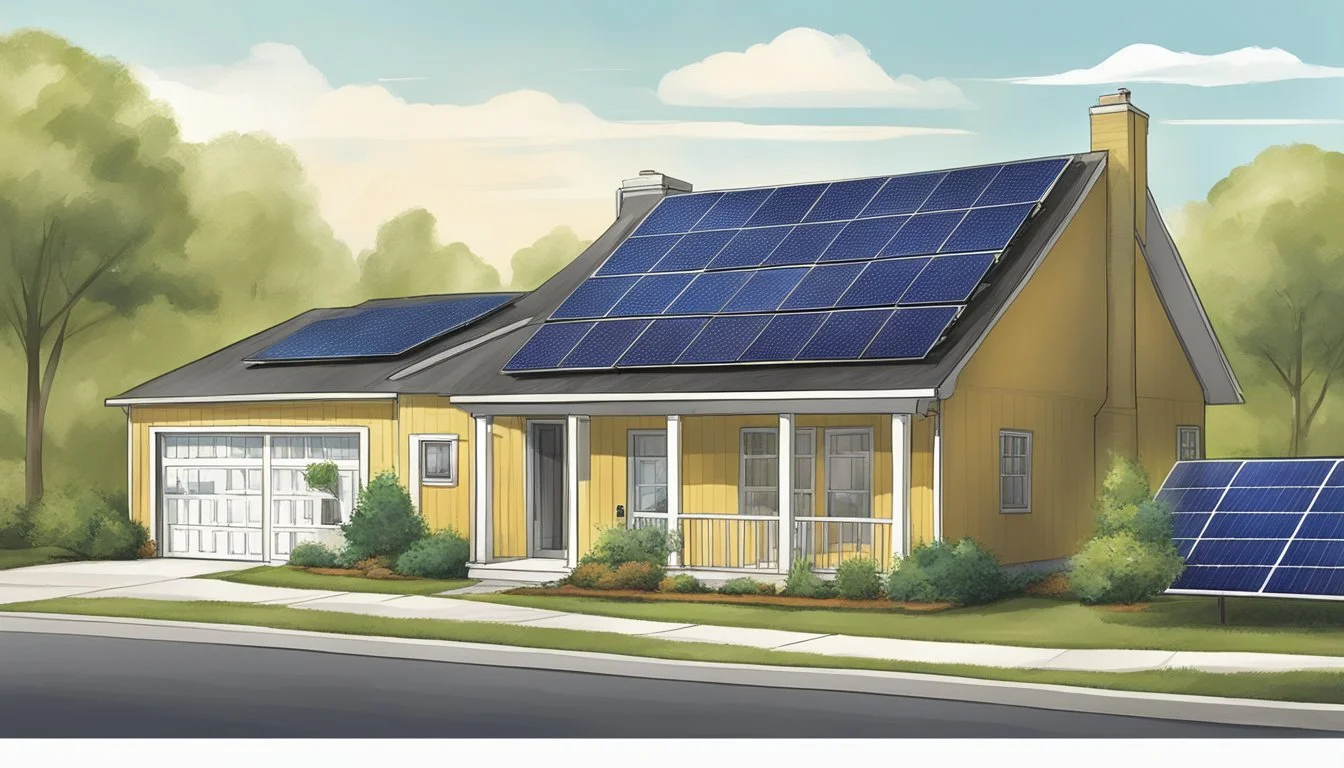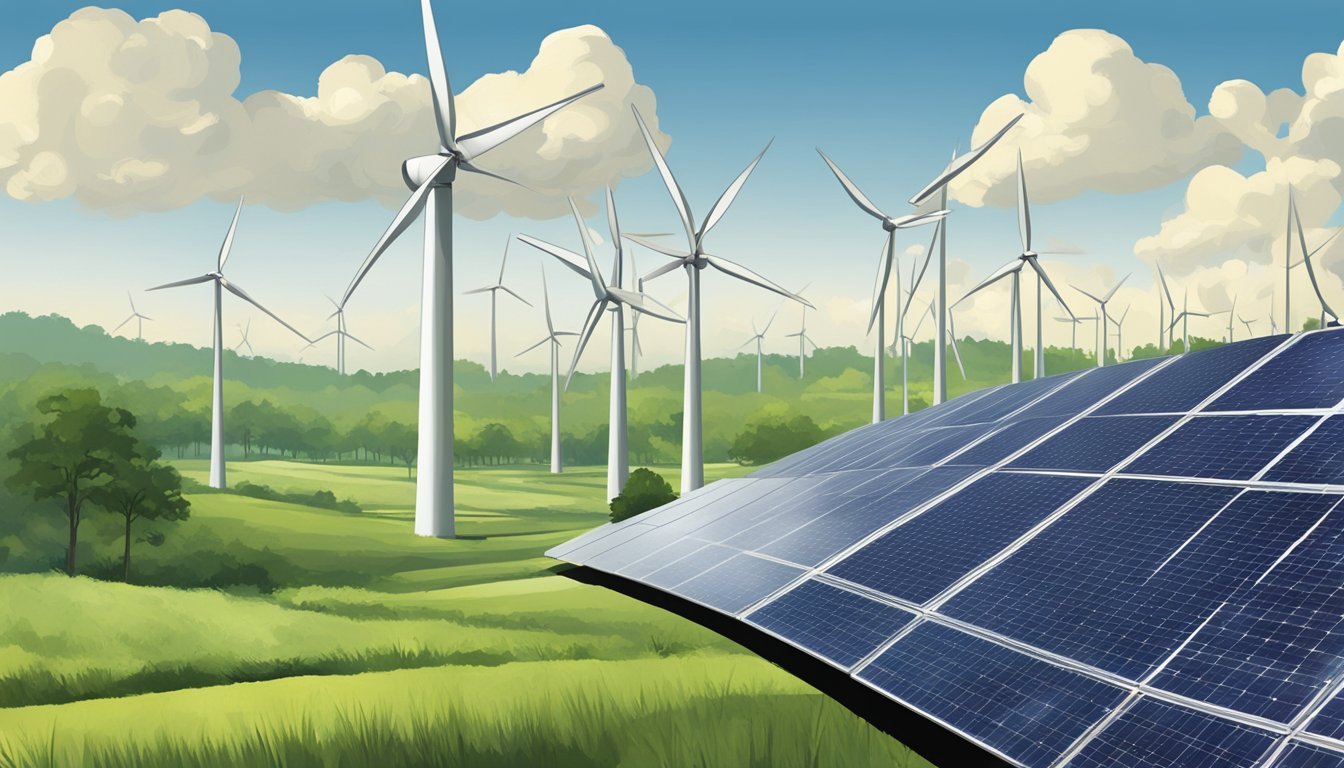Incentives for Renewable Energy and Conservation in Alabama
Navigating Policies and Benefits
Incentives for renewable energy and conservation have become pivotal in Alabama's push towards a sustainable future. As a state with increasing investments in energy efficiency and alternative energy sources, Alabama offers a variety of programs designed to encourage residents and businesses to adopt more efficient energy practices and to use renewable energy sources. From State Energy Program (SEP) and Energy Efficiency Programs that provide both funding and technical assistance, to specific tax credits and rebates designed to lower the initial costs of solar installations, Alabama is actively working to increase its energy security and infrastructure resilience, and to decrease energy waste.
The economic and environmental benefits of these incentives are evident as they help reduce the overall energy bills for consumers and promote a more diversified energy portfolio. Alabama's approach involves not just immediate financial subsidies but also long-term financing options, such as loans that foster greater adoption of renewable energy technologies in public buildings such as schools. The local government's initiatives, bolstered by the Inflation Reduction Act, play a significant role in shifting Alabama's landscape towards sustainable energy use, making it an attractive state for individuals and organizations looking to invest in a greener future.
Furthermore, the support extends beyond solar energy, with resources like the Alternative Fuels Data Center showing a commitment to diverse renewable energy sources and energy-saving measures. These regulations and incentives demonstrate Alabama's recognition of the importance of a robust energy strategy that prioritizes efficiency, affordability, and sustainability. As such, businesses and residents are increasingly incentivized to become part of a cleaner energy economy that not only contributes to environmental protection but also ensures enhanced energy security for the state.
Historical Context of Renewable Energy in Alabama
Alabama's journey towards renewable energy and conservation can be characterized by several legislative efforts, a noticeable impact on local job markets, and a distinct trajectory when compared to neighboring states.
Legislative Milestones
In adopting renewable energy practices, Alabama has had a range of legislative milestones. These include state-level incentives and federal programs that have been applied locally. For example, the state has been involved in the Energy Efficiency and Conservation Block Grants Program which directed funds towards developing and managing energy efficiency initiatives. This alignment with national energy goals not only supports the lowering of energy costs, but also emphasizes the reduction of environmental impact from energy production.
Impact on Local Employment
The push towards renewable energy sources has led to an uptick in job creation within Alabama. Opportunities have arisen in sectors related to the development and maintenance of biomass facilities and the exploration of other renewable energy sources. Significant strides in job creation reflect both the state’s rich resources and the increasing demands for sustainable energy options.
Comparison with Neighboring States
When considering the path of renewable energy in Tennessee, Mississippi, and Alabama, there are notable differences in policies and implementation rates. Alabama, with its emphasis on biomass, stands out with unique resource advantages. Yet, it also means Alabama faces different challenges and milestones compared to its neighbors who may focus on different forms of renewable energy like solar or wind.
Current Energy Landscape
Alabama's energy sector is evolving, with a concerted effort towards implementing energy efficiency programs and boosting renewable energy resources. Key players, including utility companies and government agencies, are pivotal in shaping this landscape.
Utility Companies and Energy Production
Utility companies in Alabama are the primary providers of energy, sourcing electricity from a mix of fossil fuels and renewable resources. Alabama Power, one of the largest providers, has been expanding its portfolio to include more renewables, making strategic moves to harness Alabama's solar and wind energy potential. The energy production in the state is moving towards a blend, slowly integrating more sustainable options alongside conventional power generation methods.
Role of Alabama Power and DERS
Alabama Power plays a significant role in the state's energy landscape. They are active in developing and implementing Distributed Energy Resources (DERS), which enable a shift away from centralized power systems to a more diversified and resilient energy infrastructure. By investing in DERS, Alabama Power contributes to an adaptable energy grid that can incorporate renewable energy sources more efficiently.
Energy Efficiency Programs
The state runs various energy efficiency programs designed to lower energy costs and environmental impact. The State Energy Program (SEP) is a notable initiative that supports planning and implementing programs to improve energy efficiency and encourage renewable energy adoption. Additionally, there are incentives, like tax credits introduced under the Inflation Reduction Act, which aim to further solar adoption for residential, municipal, and educational institutions, and programs that weatherize homes to reduce energy consumption.
State and Federal Incentives
Alabama offers a range of state and federal incentives designed to encourage the adoption of renewable energy and conservation measures. These incentives come in various forms, including tax credits, rebates, and grants, each intended to make renewable energy projects more financially feasible for individuals and businesses.
Tax Credits and Rebates
Tax Credits: The Federal government provides significant incentives such as the Renewable Electricity Production Tax Credit (PTC) and the Investment Tax Credit (ITC), which are pivotal for large-scale renewable energy projects. These tax credits can offset a portion of the cost of installing renewable energy systems. For homeowners, the Residential Energy Credit incentivizes smaller-scale installations.
Rebates: On the state level, rebates may be offered by local utilities or state-specific programs. These rebates often provide an immediate reduction in out-of-pocket costs for energy-efficient appliances, solar panels, or other renewable energy systems.
Formula and Block Grants
Formula Grants: The State of Alabama can receive funds through federal formula grants, which are dispersed based on predefined criteria, such as population or energy usage. These grants support a wide array of state energy programs and initiatives.
Block Grants: The Energy Efficiency and Conservation Block Grant (EECBG) Program, funded by the federal government, offers block grants to support projects that aim to reduce energy use and fossil fuel emissions, and improve energy efficiency at the local and regional levels.
Specific Programs for Energy Security
Within Alabama, there are specific programs aimed at increasing energy security and resilience. The AlabamaSAVES program, part of the wider State Energy Program, provides loan financing for energy efficiency and renewable energy improvements which lead to significant energy cost savings for businesses.
The state, through collaboration with the Federal government, seeks to not only provide financial assistance but also to foster a secure, clean, and self-sustaining energy future. These incentives and programs are there to ensure individuals, businesses, and government entities can contribute to energy conservation and the utilization of renewable resources.
Renewable Energy Programs
Alabama offers various programs aimed at promoting renewable energy, specifically focusing on solar power initiatives across residential sectors, local communities, academic institutions, and municipalities. These programs are critical in achieving energy sustainability and independence.
Residential Solar Initiatives
In Alabama, homeowners are encouraged to adopt solar power through incentives designed to lower installation costs and provide long-term savings. They can access tax credits and financing options that make transitioning to solar energy more affordable. For instance, specific programs offer rebates and solar financing, reducing the initial investment and making solar panels more accessible to a wider range of households.
Community and Municipality Engagement
Municipalities and community groups play a pivotal role in Alabama's shift towards renewable energy. Collaborative projects, often funded by state grants, enable public facilities and local governments to install solar power systems. This not only leads to decreased energy expenses but also serves as an educational platform for community members on the benefits of renewable energy. The State Energy Program helps to enhance energy security and increase energy affordability at the local level, by providing funding and technical assistance.
Solar Power in Academic Institutions
Schools and universities in Alabama are incorporating solar power as a core part of their energy plans. These institutions benefit from programs that provide technical support and potentially funding, which facilitate the installation of solar energy systems on campus. These initiatives not only supply clean energy but also serve as valuable educational tools for students to learn about renewable energy firsthand. Integration of solar power in these settings fosters a culture of sustainability and prepares students for a future in which renewable energy is the norm.
Support for Businesses and Nonprofits
Alabama offers a range of support mechanisms for businesses and nonprofits aiming to implement energy efficiency upgrades and sustainable practices. This support includes financial incentives, professional guidance, and resources for energy assessments to assist in strategic energy planning.
Incentives for Energy Efficiency Upgrades
Businesses and nonprofits in Alabama can take advantage of specific financial incentives to offset the costs of energy efficiency upgrades. These may include, but are not limited to, rebates for installing energy-efficient appliances, lighting, and HVAC systems. For example, the Renew America’s Nonprofits Program initiated by the Department of Energy provides funding to help nonprofits reduce carbon emissions and lower utility costs.
Technical Assistance and Training Offers
Organizations have access to technical assistance and training to understand and maximize their energy efficiency potential. This support is designed to build internal capacity, equipping businesses with the skills needed to sustain their energy improvements. Furthermore, programs such as those facilitated by local utilities could provide seminars and workshops addressing the latest in energy conservation practices.
Energy Assessment and Planning
Energy assessments serve as a critical first step for organizations to identify areas for improvement. Professional energy audits can uncover inefficiencies and propose corrective actions. Following this, entities can utilize strategic energy planning services to create long-term sustainability goals, map out implementation strategies, and monitor progress towards energy conservation milestones. Resources and guidance from entities like the U.S. Department of Energy can be instrumental in this process.
Assistance for Low-Income Households
In Alabama, various programs provide crucial support to low-income households, aiming to reduce energy bills and enhance home safety. These initiatives offer both financial incentives and practical solutions to address the unique challenges this demographic faces.
Weatherization Assistance Program
Alabama's Weatherization Assistance Program (WAP) targets the energy efficiency of low-income homes. Funded through the Department of Energy, WAP provides services like insulation, air sealing, and minor home repairs. This results in tangible reductions in energy bills and enhances overall comfort within the home.
Low-Income Energy Efficiency Funding
Low-Income Energy Efficiency Funding takes another approach, providing financial incentives directly for the purchase and installation of energy-efficient appliances. Such upgrades further contribute to lower utility costs and more sustainable living environments while also aiding in managing the energy burden that disproportionately affects low-income residents.
Health and Safety Improvements
Lastly, the alignment of energy conservation programs with Health and Safety Improvements is vital. Initiatives such as those provided by the Biden-Harris Administration ensure that addressing energy inefficiency does not come at the cost of compromising health and safety standards. These programs can cover hazard reduction, the installation of smoke detectors, and the correction of electrical hazards, thereby significantly improving the quality of life for those in need.
Economic Impact and Incentives
In Alabama, incentives for renewable energy and energy conservation are fostering significant economic benefits, from job creation to consumer savings, reflecting a tangible investment in future sustainability.
Jobs and Workforce Development
The push for renewable energy and conservation in Alabama has led to a flourishing job market within the clean energy sector. These initiatives serve to not only lower energy costs and consumption but also provide financing programs that fuel workforce growth. The State Energy Program (SEP) and Energy Efficiency Programs are central to this development, paving the way for new employment opportunities across various green technologies.
Investment in Energy Infrastructure
Financing for renewable energy in Alabama is increasingly supported through measures like the investment tax credit, which incentivizes installations of solar panels and other sustainable energy technologies. This backing is evident in the surge of energy infrastructure investments, positioning Alabama as a forward-thinking state taking concrete steps to enhance its energy independence and long-term resilience.
Cost-Saving Benefits for Consumers
On a consumer level, there are significant cost-saving benefits due to the state's encouragement of energy efficiency. Alabama’s approach includes a host of incentives aimed at reducing the short-term and long-term energy expenses for households and businesses alike. An example is the financial assistance used to lower energy costs, which allows the citizens of Alabama to experience a direct reduction in their utility bills while promoting environmentally conscious living practices.
Innovation and Future Developments
Alabama is witnessing significant advancements in clean energy through focused research and development efforts and the integration of modern solar technologies. Additionally, updates in energy codes and regulations are paving the way for a more energy-efficient future.
Research and Development in Clean Energy
Alabama's commitment to clean energy is evidenced by its investment in research and development initiatives. This investment aims to drive down the costs of solar energy and improve efficiency. Public and private partnerships are forming to create innovative solutions that align with state sustainability goals and economic development.
Updates to Energy Codes and Regulations
In response to the evolving energy landscape, Alabama is revising energy codes and regulations. These updates are crucial to ensuring that new construction and retrofitting projects meet higher standards of energy conservation, consequently reducing overall energy consumption and bolstering the use of renewable resources.
Emerging Solar Technologies
With the solar cost curve continuing to trend downward, Alabama is adopting emerging solar technologies that promise to further drive economic value and sustainability. Innovations in solar panels and energy storage are making solar energy more accessible and are expected to play a vital role in the state's energy strategy.
Community and Environmental Impact
The integration of renewable energy initiatives in Alabama, especially in areas like Tuscaloosa County, has profound effects on both the community's welfare and the state's environmental health. These ventures not only address the urgent need for sustainable energy but also hold the potential to improve public health and revitalize essential services like wastewater treatment.
Solar Installations in Sensitive Areas
The careful placement of solar panels in environmentally sensitive areas minimizes the ecological footprint. For instance, solar installers in Tuscaloosa County work in concert with local environmental regulations to ensure that installation avoids disruption to the natural habitat. This precision allows for the generation of clean energy while preserving Alabama's diverse ecosystems.
Renewable Energy and Public Health
Renewable energy projects in Alabama are recognized for their positive impact on public health. By reducing reliance on fossil fuels, these initiatives are linked to lower emissions and improved air quality. Communities, particularly those near renewable energy sites, are expected to experience fewer health-related issues caused by air pollution.
Wastewater Treatment and Clean Energy
Integration of clean energy solutions with wastewater treatment facilities allows for a more sustainable approach to managing waste. By utilizing biogas from the treatment process, these facilities can generate renewable energy, thus reducing overall energy costs and contributing to the health and safety of the surrounding community.
Through these efforts, Alabama is demonstrating that investing in renewable energy and conservation not only bolsters the state's environmental and economic profiles but also directly enhances the quality of life for its residents.
Accessing Information and Resources
In Alabama, individuals seeking to harness renewable energy solutions and conservation methods can access a vast array of information and resources. These are maintained by various local and state departments, specialized organizations such as Energy Alabama, and through regular updates via newsletters and alerts.
Contacting Local and State Departments
For specific guidance on renewable energy incentives and conservation programs, contacting local governments is a starting point. They can direct individuals to appropriate resources or departments for their energy needs. The Alabama Department of Energy is another vital contact, providing information on state-level incentives and regulations regarding renewable energy projects.
Utilizing the Energy Alabama Website
Energy Alabama, spearheaded by Daniel Tait, is a hub for knowledge on sustainable energy in Alabama. They have comprehensive resources available, including detailed guides and the latest updates on energy policy. Their website is a go-to source for stakeholders to learn about energy efficiency programs, solar initiatives, and other renewable energy opportunities.
Subscribing to Newsletters and Alerts
Keeping abreast of the latest developments in the field of renewable energy and energy conservation can be achieved by subscribing to mailing lists. Relevant newsletters and alerts from organizations such as U.S. Department of Energy can offer critical insights into federal-level incentives that supplement state programs. This enables residents to stay informed about both local and national energy strategies.











